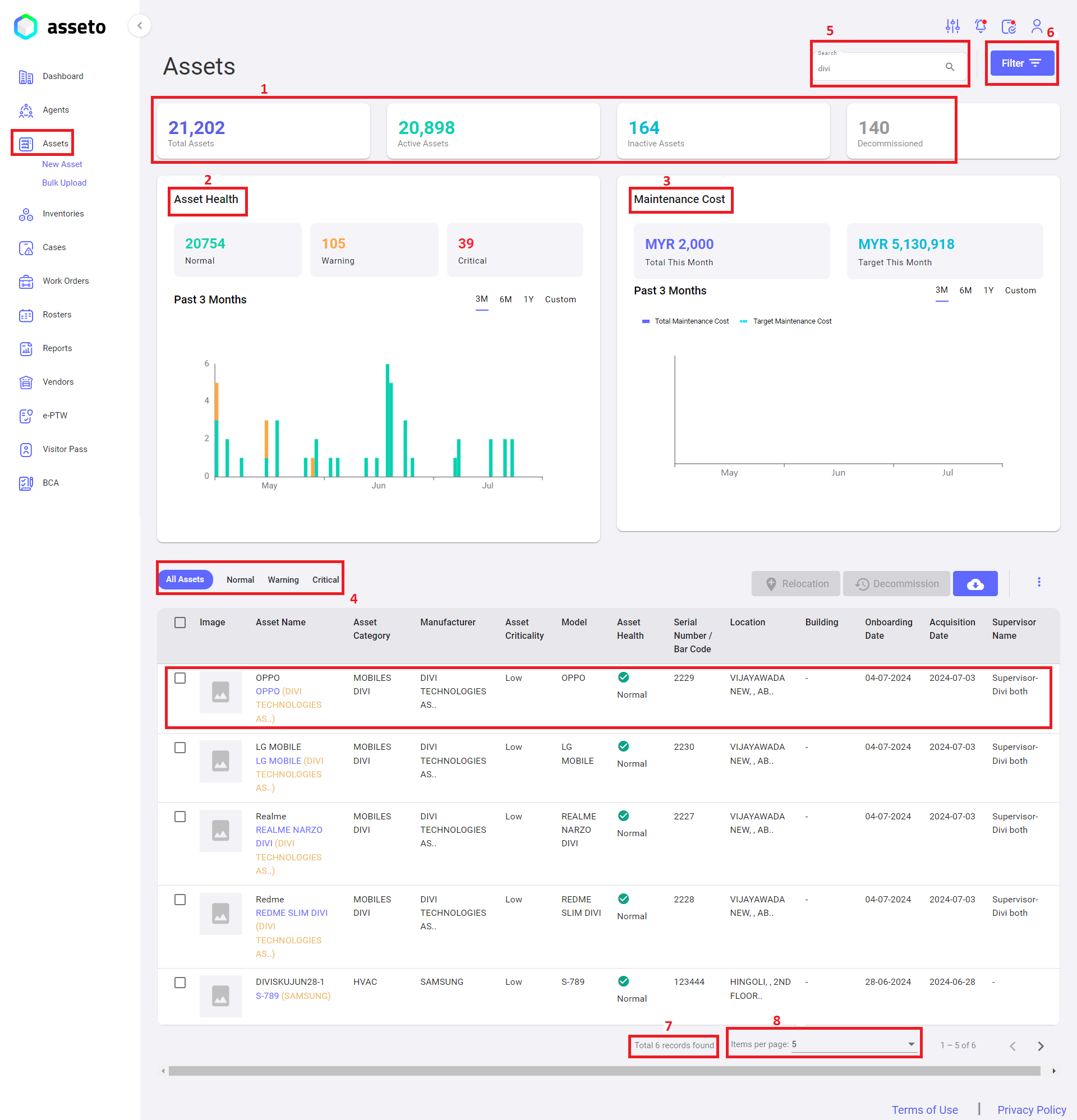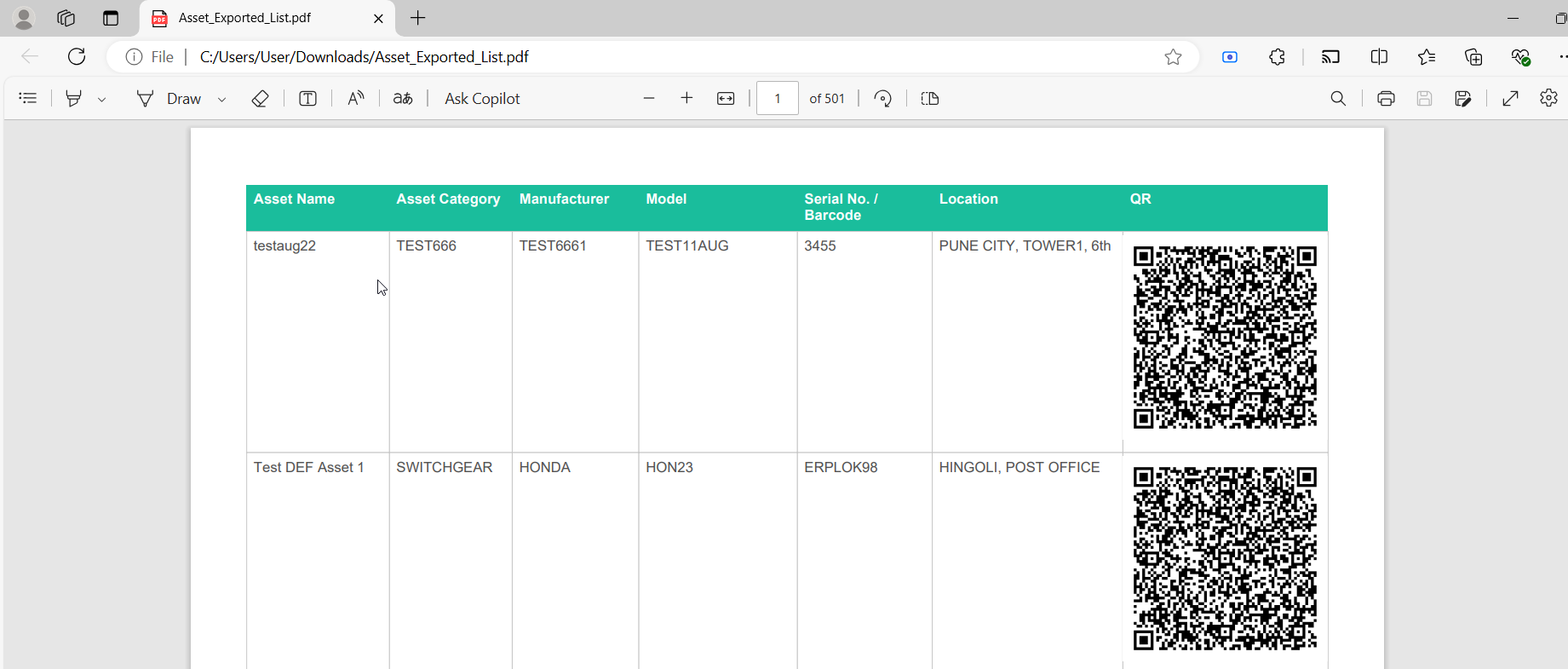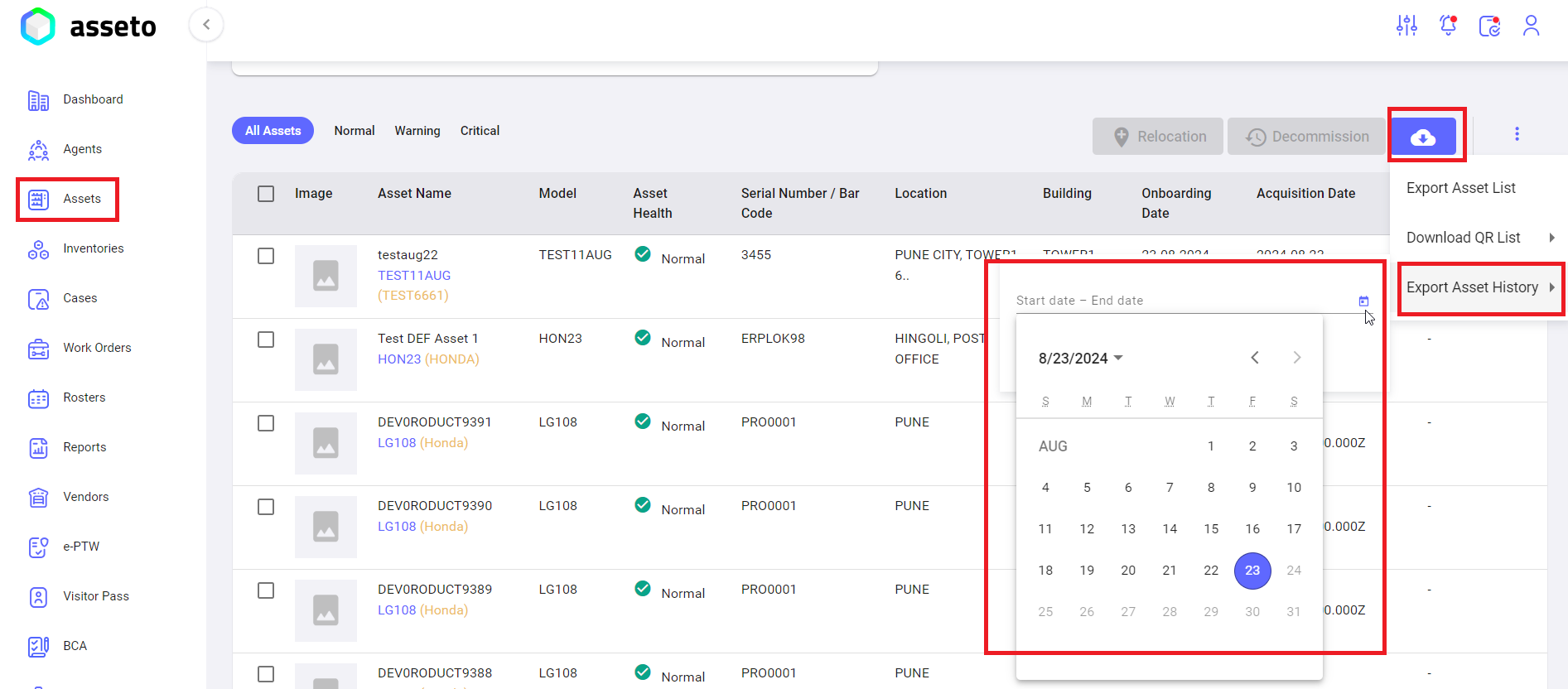3.1. Assets Dashboard
Assets Dashboard:
The Assets dashboard page is shown in the following screenshot.
The Assets Dashboard page displays the following information and charts:
- Asset Summary: Shows the total number of assets in the system, including the count of active, inactive, and decommissioned assets to date.
- Asset Health: Displays the number of active assets categorized by health status (Normal, Warning, Critical) and shown in a bar chart for different time periods (e.g., 3 months, 6 months, 1 year).
- Maintenance Cost: Shows maintenance cost data with "Total This Month" and "Target This Month" values. A chart visualizes the total and target maintenance costs.
- Assets List: Users can view the complete list of onboarded assets on the dashboard.
- Search Bar: Allows users to search for specific assets by asset name.
- Filter: Filters assets by various criteria such as asset category, manufacturer, model, etc. Clicking the filter icon will display a screen where the user can select filters, click the "Add" button, and then click "Apply." Filtered results will be displayed on the assets dashboard.

- Total Records: The total number of assets in the system is displayed at the bottom of the assets table.
- Pagination: The pagination view is located beside the total number of records, allowing the user to select the number of records to display per page (5, 10, 25, 50, 100) to view the desired list.
Assets List Page:
The asset list page has the following features.
1. Asset Relocation: if you click onClicking the Relocation"Relocation" button the system will navigate the user to a new work order page with the subject set relocationto request"Relocation Request" and some auto auto-filled data offor the selected asset. HereThe youuser can fill in the remaining fields and click on save"Save" to apply for asset relocation.
2. Asset Decommission: if you click onClicking the decommission"Decommission" button the system will navigate the user to a new work order page with the subject decommissionset requestto "Decommission Request" and some auto auto-filled data offor the selected asset. HereThe youuser can fill in the remaining fields and click on save"Save" to apply for asset Decommission.decommissioning.
Ii. Export Asset List: To export the list of available assets from the system, please follow the appropriate procedures.
When you click on “Export Asset List” option, all assets list csv file downloaded into your local system.
Asset exported file as shown by following screenshot.
II.ii. Download QR List: To download the assets list with QR.
When you select the “user selects the "Download QR List”List" option, youthe "Export As" feature will see the “Export As” feature, which offerspresent two choices: ‘With Image’ and ‘Without Image.’Image’. PleaseThe user should select one of these options to download the assets list with QR codes.
When youthe clickuser onclicks “Download”the "Download" button, alla PDF file containing the assets list with QR pdfcodes filewill be downloaded intoto yourtheir local system.
AssetThe asset exported pdfPDF file with QR ascodes is shown byin the following screenshot.
III.iii. Export Asset History:History: ToThis option allows the user to download the assetsasset history withinfor the selected date range.
When youthe selectuser selects the “"Export Asset History”History" option, youthe "Calendar" feature will seeappear, allowing the “calendar” feature, which offersuser to select a start date and end date from the calendar.date. Please select the dates to download the assetsasset list.history within the chosen range.
Click onthe “"Download History" button to download history”the button.asset history for the selected date range.
AssetsThe assets list file will be downloaded intoto yourthe user's local system.
4. List Icon: Customize Table View: customizeThe table view: Youuser can customize the table by selecting the various columns and click on save button, thenclicking the "Save" button. The selected columns will then populate in the assets table with the data. data.
5. Asset Detail View:View: UserThe user can view the detailed viewinformation of an asset by selecting one assetit from the assets list fromon the assets dashboard page.










